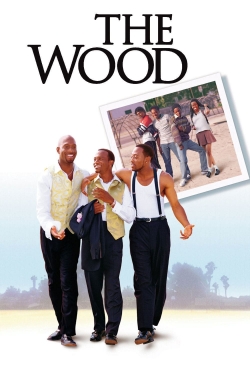
He’s a changed person now and has a plan, but in a recession just getting a chance is hard enough.Įach of the guys lets you into their world, and we witness them trying to make their dreams come true. Life on the streets means the smallest mistake can affect your entire future, as Frankie knows only too well. However being there and financially supporting him are two different things, so finding work is a priority in a city where jobs are scarce. After growing up with no father figure, Wes is determined to be part of his son’s life.

Read MoreĬraig doesn’t want to leave home but his mum’s lost her job and cannot keep the house, leaving him unsure of where to go or what to do. They are also one of the poorest, most disadvantaged regions in America.

13, 2009 - The oldest mountains in America are rich in natural beauty with their raging creeks, steep hollows and old pines. By KETURAH GRAY February 10, 2009, 9:32 AM Feb. All on the cusp of adulthood and dealing with the normal pressures of growing up with one similarity – they are all surviving on benefits. Diane Sawyer reports on four children growing up in central Appalachia. With more than one in six of the nation’s children living below the poverty level, the film gives an unforgettable perspective on the impact of unemployment, foreclosure and financial distress through the eyes of the children directly impacted.A striking and sensitive documentary that follows three very different teenage boys growing up and struggling to survive on benefits.įilmed over one summer this sensitive documentary follows three very different teenage boys.
#GROWING UP POOR IN AMERICA DOCUMENTARY FULL#
Watch Poor Kids for the full story on how these children’s lives are now unfolding. Since the filming of Poor Kids,the child poverty rate in the United States has declined, but still remains very high. “If you fall, you gotta get up, dust it off and keep on going,” says Johnny, now 19 and living with his grandmother on the south side of Chicago. Poor Kids is a PBS Frontline documentary filmed in 2012 that tells the story froma perspective not often heard that of children living in poverty. “No matter what I go through, I’ll still, like, wanna try and try and try to be better,” says Brittany, now 15. In early 2020, it was estimated that almost 12 million children in America were living in poverty a burden disproportionately borne by Black and. Where are Kaylie, Johnny, Jasmine, Brittany, and their families today? Scattered across the country and still struggling - but still persisting. The documentary, Growing Up Poor in America, follows three children and their families in the battleground state of Ohio as the COVID-19 pandemic amplifies their struggle to stay afloat. “Life is gonna be hard because there is hardly gonna be any jobs left in the future.” Then there’s nine-year-old Brittany, whose mother learned she was expecting another baby shortly after the family lost their home: “The baby’s future is gonna be weird and messed up,” Brittany said. “It makes me feel like I just wish I never lived here.” His sister, Jasmine, also yearned for a better life: “I’m embarrassed because I’m poor and because I live in a shelter,” she said. It’s a worry that was all too familiar to 13-year- old Johnny, who along with his 9-year- old sister Jasmine and their other siblings had been living at a homeless shelter since their father’s business went south: “Grades is my only way out of here,” Johnny told FRONTLINE. She worried about missing so much school as a result of her family’s transient existence: “If I keep missing school then I see my future poor, on the streets, in a box,” she said, from the motel room where she and her family were temporarily living.

We don’t get that three meals a day, like breakfast, lunch and dinner,” said 10-year- old Kaylie. Support for Growing Up Poor in America is provided by WNET’s Chasing the Dream initiative on poverty and opportunity in America, with funding by. When FRONTLINE viewers first met Kaylie, Brittany, Jasmine, Johnny and their families, they were living in the Quad Cities, a crossroads along the border of Iowa and Illinois, and had been hit hard by the recession. The documentary, Growing Up Poor in America, follows three children and their families in the battleground state of Ohio as the COVID-19 pandemic amplifies their struggle to stay afloat. Startling and intimate, the film is an indelible portrait of the realities of growing up poor in America, told by children in three families over the course of half a decade. Now, in a new version of Poor Kids, FRONTLINE continues its reporting on child poverty in America - revisiting the kids at the heart of the film to see what their lives are like now, and offering a powerful, firsthand look at what poverty means to children and the country. CREDIT: Producer.įive years ago, in the Emmy-nominated documentary, Poor Kids, FRONTLINE explored the economic crisis as it’s rarely seen: through the eyes of children.


 0 kommentar(er)
0 kommentar(er)
